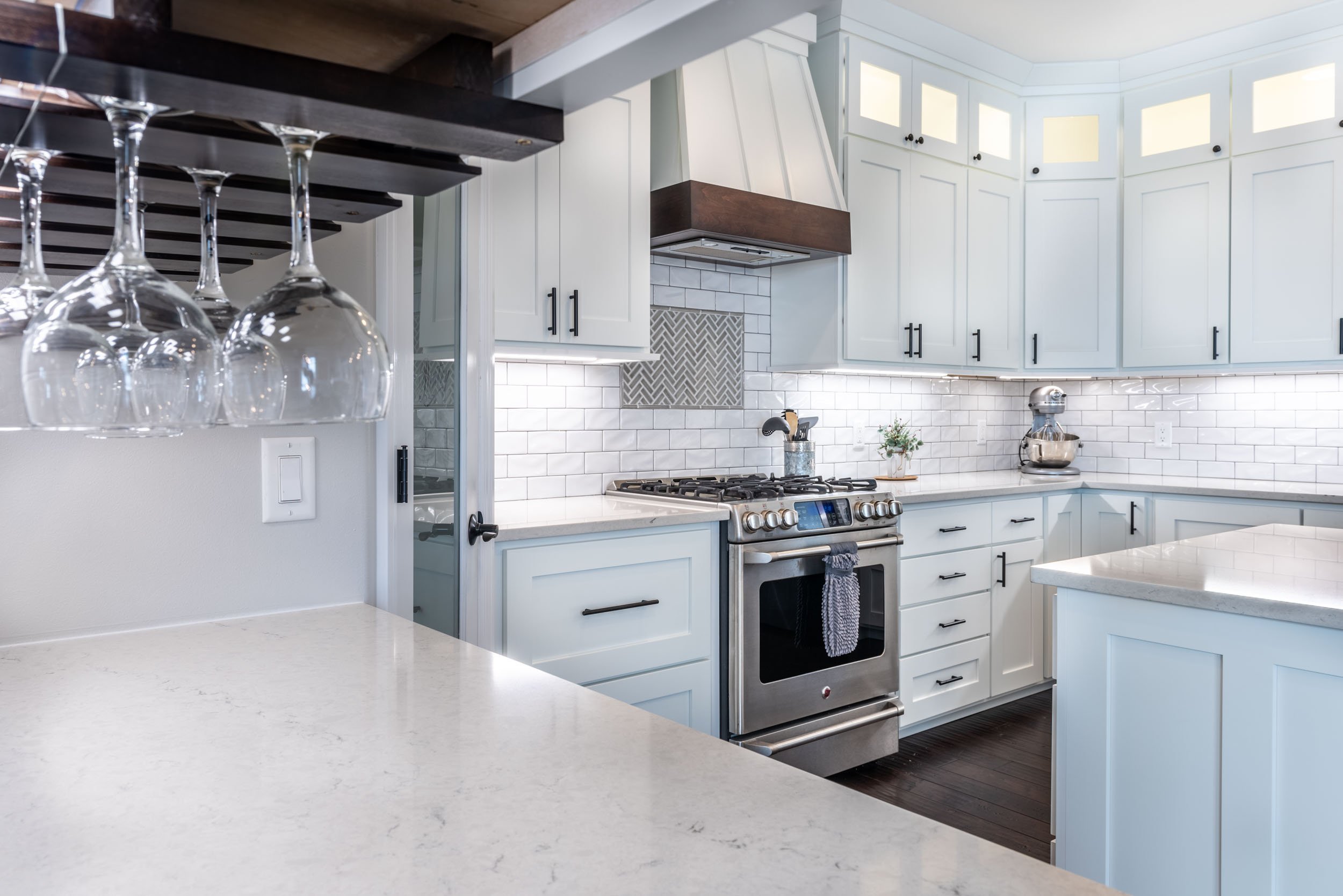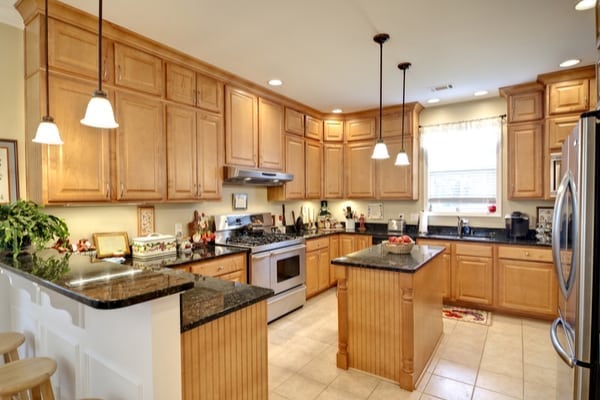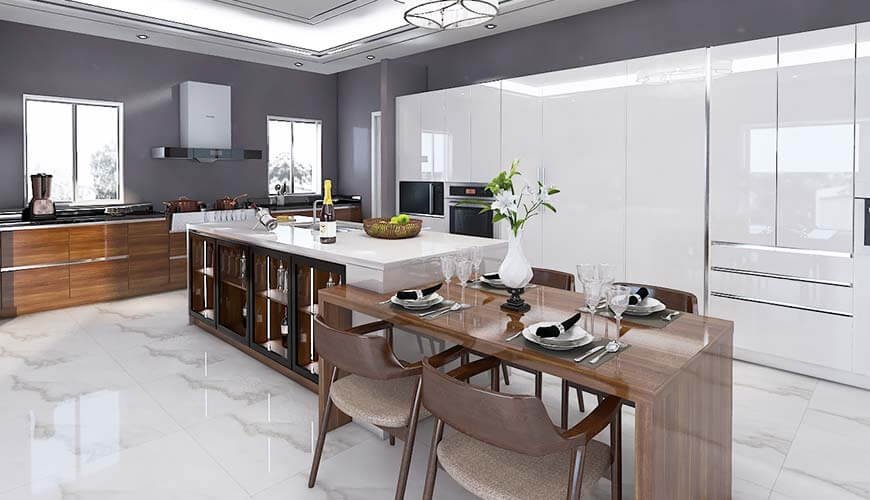Kitchen cabinets typically need to be replaced every 15 to 20 years. This varies based on wear, tear, and usage.
Kitchen cabinets are a crucial part of any home, both functionally and aesthetically. Over time, they endure significant wear and tear from daily use. Scratches, dents, and fading finishes can diminish their appearance and functionality. Regular maintenance can extend their life, but eventually, replacement becomes necessary.
Modernizing your kitchen with new cabinets can also increase your home’s value. Understanding the typical lifespan of kitchen cabinets helps in planning renovations and budgeting appropriately. Regularly assessing the condition of your cabinets ensures you maintain a functional and visually pleasing kitchen space. Investing in quality cabinets and proper care can maximize their longevity.

Credit: www.capitalkitchenrefacing.com
Table of Contents
ToggleSigns Of Wear And Tear
The kitchen is often the heart of the home. Over time, kitchen cabinets can show signs of wear and tear. Recognizing these signs early helps keep your kitchen functional and beautiful. Here are some key indicators to watch for:
Visible Damage
Visible damage to kitchen cabinets is easy to spot. Look for these signs:
- Scratches and Dents: These can make cabinets look old and worn.
- Peeling Paint: Paint that peels or chips away looks unsightly.
- Water Damage: Water stains, bubbling, or warping indicate moisture problems.
- Loose Hinges: Hinges that are loose or sagging need attention.
Regularly check for these issues to maintain the beauty of your kitchen.
Functional Issues
Functional issues can impact the usability of your kitchen cabinets. Pay attention to the following:
- Difficulty Opening/Closing: Cabinets that stick or don’t close properly are problematic.
- Broken Drawers: Drawers that don’t slide smoothly or are broken need repair.
- Weak Shelves: Shelves that sag under weight are unsafe.
- Misaligned Doors: Doors that don’t align well can cause frustration.
Addressing these functional issues ensures your kitchen remains efficient and user-friendly.
Staying on top of these signs of wear and tear helps prolong the life of your kitchen cabinets. Regular maintenance and timely repairs keep your kitchen in top shape.
Material Longevity
Understanding the longevity of your kitchen cabinets starts with their material. Different materials have varying lifespans. Knowing how long each type lasts can help you plan replacements. This section will explore the longevity of popular cabinet materials.
Wood Cabinets
Wood cabinets are a popular choice for kitchens. They offer natural beauty and durability. These cabinets can last between 20 to 30 years if maintained well. Regular cleaning and polishing can extend their life. Moisture is wood’s enemy. Make sure to keep them dry. Also, avoid placing hot items directly on wooden surfaces.
- Durability: 20-30 years
- Maintenance: Regular cleaning and polishing
- Important Tip: Keep them dry to avoid damage
Laminate Cabinets
Laminate cabinets are known for their cost-effectiveness. These cabinets are less expensive than wood but still look great. They can last between 10 to 20 years. Longevity depends on the quality of the laminate and care. Avoid sharp objects that can scratch the surface. Wipe spills immediately to prevent stains.
| Material | Durability | Care Tips |
|---|---|---|
| Wood | 20-30 years | Keep dry, regular polishing |
| Laminate | 10-20 years | Wipe spills, avoid scratches |
Choose the right material based on your needs and budget. Proper care can significantly extend the life of your cabinets.
Impact Of Usage
The frequency of replacing kitchen cabinets depends significantly on usage patterns. Different kitchens have varying levels of usage, impacting their longevity. Understanding how often you use your kitchen can help determine when to replace your cabinets.
High-traffic Kitchens
In high-traffic kitchens, cabinets endure daily wear and tear. Families that cook multiple meals daily put more stress on cabinets. Frequent opening and closing of doors and drawers can lead to faster deterioration. Grease, moisture, and spills can also damage cabinet surfaces over time.
High-traffic kitchens often require more frequent replacements. On average, cabinets in these kitchens might need replacing every 10-15 years. Quality materials and sturdy construction can extend this lifespan.
- Daily cooking and meal prep
- High levels of grease and moisture
- Constant opening and closing
Occasional Use Kitchens
Occasional use kitchens experience less wear and tear. These kitchens are used infrequently, such as in vacation homes or by people who rarely cook. Cabinets in these kitchens face less stress and can last longer.
In occasional use kitchens, cabinets might last 20-30 years or more. The lower frequency of use helps maintain the integrity of the cabinets for a longer time.
- Used for occasional cooking
- Minimal exposure to grease and moisture
- Less frequent opening and closing
Maintenance Tips
Proper maintenance can extend the life of your kitchen cabinets. Regular cleaning and preventive measures are essential to keep them looking new. Below are some tips that can help you maintain your kitchen cabinets effectively.
Regular Cleaning
Regular cleaning is crucial for maintaining kitchen cabinets. Dust and grease can accumulate quickly. Here’s how you can keep them clean:
- Use a soft cloth to wipe surfaces weekly.
- Warm water and mild soap can clean sticky spots.
- Dry surfaces immediately to avoid water damage.
- Avoid abrasive cleaners that can scratch the surface.
Preventive Measures
Taking preventive measures can save your cabinets from premature wear and tear. Follow these tips to keep your cabinets in top shape:
- Install cabinet liners to protect from spills.
- Use felt pads under heavy items.
- Check for and fix leaks promptly.
- Avoid slamming doors and drawers.
Below is a table summarizing the key maintenance tips:
| Task | Frequency | Notes |
|---|---|---|
| Dusting | Weekly | Use a soft cloth |
| Cleaning sticky spots | As needed | Use mild soap and water |
| Drying surfaces | Immediately after cleaning | Prevent water damage |
| Installing cabinet liners | Once | Protects from spills |
| Checking for leaks | Monthly | Prevent water damage |
Cost Considerations
Replacing kitchen cabinets is a big investment. It’s important to consider costs. You need to budget wisely and understand the value you get. This section covers the cost aspects of replacing kitchen cabinets.
Budgeting For Replacement
Creating a budget helps manage expenses. It ensures you don’t overspend. Here are some tips to help you budget:
- Assess Your Finances: Check how much money you have.
- Research Costs: Look up prices for different cabinets.
- Set a Limit: Decide the most you can spend.
Here’s a table showing average costs:
| Type of Cabinet | Average Cost |
|---|---|
| Stock Cabinets | $100 – $300 per linear foot |
| Semi-Custom Cabinets | $150 – $650 per linear foot |
| Custom Cabinets | $500 – $1,200 per linear foot |
Cost Vs. Value
When you spend money, you want value. Not all cabinets offer the same value. Here’s a breakdown:
- Stock Cabinets: Cheapest option, but limited styles.
- Semi-Custom Cabinets: More choices, better quality.
- Custom Cabinets: Best quality, but most expensive.
Think about how long you’ll live in your home. Custom cabinets last longer. They add more value to your home. But they cost more upfront. Stock cabinets cost less. But you might replace them sooner. Choose what fits your needs and budget best.

Credit: degnandesignbuildremodel.com
Alternatives To Replacement
Replacing kitchen cabinets can be costly and time-consuming. Fortunately, there are effective alternatives to replacement that can breathe new life into your kitchen. These alternatives not only save money but also offer a fresh look without the hassle of a full renovation.
Refacing Cabinets
Refacing cabinets is a popular option for updating your kitchen. This process involves replacing the cabinet doors and drawer fronts while keeping the existing cabinet boxes. It’s a great way to give your kitchen a modern look without the cost of new cabinets.
- Cost-Effective: Refacing is cheaper than full replacement.
- Less Disruption: Your kitchen remains usable during refacing.
- Eco-Friendly: Refacing reduces waste by reusing existing materials.
Refacing typically includes new door styles, finishes, and hardware. This allows you to customize the look to fit your design preferences.
Painting Cabinets
Painting cabinets is another excellent alternative to replacement. It is a cost-effective way to update your kitchen’s appearance. With the right paint and technique, you can achieve a professional finish that lasts.
- Preparation: Clean and sand the cabinets to ensure the paint adheres well.
- Primer: Apply a primer to create a smooth base for the paint.
- Paint: Choose high-quality paint designed for cabinets.
- Finish: Apply a protective topcoat for durability.
Painting allows for endless color options. This means you can easily match your kitchen’s new look to your overall home decor.
Painting cabinets also offers flexibility. If trends change, you can repaint them without breaking the bank.
When To Replace
Knowing when to replace your kitchen cabinets can save money and effort. There are key signs to look out for to ensure your kitchen stays functional and stylish. Let’s dive into the specifics.
Age Of Cabinets
The average lifespan of kitchen cabinets is around 15-20 years. If your cabinets are within this range or older, it’s time to assess their condition. Look for signs of wear and tear, such as:
- Warped or cracked wood
- Peeling paint or laminate
- Loose or broken hinges
Older cabinets may also have outdated materials that aren’t durable. Modern cabinets are often made from more resilient materials. This makes them last longer and withstand daily use better. If your cabinets are showing age-related issues, consider replacing them.
Changing Kitchen Style
Another reason to replace your kitchen cabinets is a change in style. Kitchens are the heart of the home, and their look can impact the overall feel. If you’ve updated other parts of your home, your kitchen might feel out of place. Here are some indicators:
- Your cabinets don’t match your new decor.
- The color or finish looks outdated.
- You want a more modern or classic look.
Modern kitchen trends favor sleek designs, open shelving, and minimalist hardware. If your current cabinets don’t align with these trends, you might want to replace them.
Replacing your cabinets can also improve functionality. Newer designs often include better storage solutions. This can make your kitchen more efficient and enjoyable to use.
Choosing New Cabinets
Choosing new kitchen cabinets can be an exciting process. It allows you to refresh your kitchen’s look and improve functionality. Here, we explore the best options for materials and design choices.
Material Options
Material is crucial for kitchen cabinets. It affects durability, appearance, and cost. Here are some popular options:
- Solid Wood: Offers a classic look and long-lasting quality.
- Plywood: Known for its strength and resistance to moisture.
- Medium-Density Fiberboard (MDF): Provides a smooth surface for painting.
- Particleboard: An affordable option, but less durable.
- Metal: Gives a modern, industrial look and is easy to clean.
Design Choices
Design choices can transform your kitchen. Think about your style and needs. Here are some design elements to consider:
- Cabinet Door Styles: Shaker, flat-panel, and raised-panel are popular styles.
- Finishes: Choose from painted, stained, or natural wood finishes.
- Hardware: Select knobs and pulls that complement your cabinets.
- Storage Solutions: Incorporate pull-out shelves, lazy Susans, and drawer dividers.
- Colors: Light colors make a space look bigger, while dark colors add elegance.
Remember, the right material and design choices can make your kitchen functional and beautiful.

Credit: cabinetsdirectusa.com
Frequently Asked Questions
How Long Do Kitchen Cabinets Last?
Kitchen cabinets typically last 15 to 20 years, depending on material and maintenance.
Signs That Kitchen Cabinets Need Replacing?
Signs include water damage, warping, broken hinges, and outdated styles.
Can Kitchen Cabinets Be Refaced?
Yes, refacing is a cost-effective option to update cabinets without full replacement.
How To Maintain Kitchen Cabinets?
Regular cleaning, avoiding water exposure, and tightening loose screws can prolong their life.
Are Custom Cabinets More Durable?
Custom cabinets often use higher-quality materials, making them generally more durable than stock options.
What Materials Last Longest For Cabinets?
Solid wood and plywood tend to last longer than particleboard or MDF.
Does Kitchen Usage Affect Cabinet Lifespan?
Heavy usage and moisture can shorten the lifespan of kitchen cabinets.
Are Painted Cabinets Less Durable?
Painted cabinets can chip but are otherwise durable with proper care.
Can Old Cabinets Be Reused?
Yes, old cabinets can be reused in garages or basements.
How Much Does Cabinet Replacement Cost?
Costs vary but average between $4,000 to $9,000 for a full kitchen replacement.
Conclusion
Regular maintenance can extend the life of your kitchen cabinets. Assess their condition every 10-15 years. High-quality materials and proper care can delay replacement. Keep an eye on signs of wear and tear. Timely updates ensure your kitchen remains functional and stylish.
Happy renovating!

